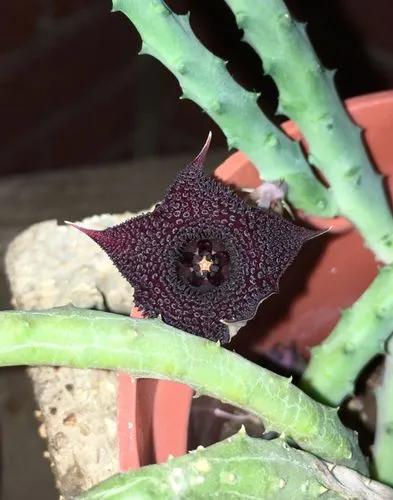Prickly Pear Cactus has many helpful uses. It has a delicious fruit, often used in medicine. Oils from the Cactus can be used for cosmetics purposes, as they are rich in Vitamin E and fatty acids. It's one of the most common Cacti in the world!
Prickly Pear Cactus Care
Opuntia phaeacantha
Other names: Tulip Prickly Pear, Mojave Prickly Pear



Opuntia ficus-indica is a flowering species of cacti from the family Cactaceae. Better known by the common name Prickly Pear Cactus, this plant is native to central Mexico, but its spread in the present is so broad that it covers Brazil. Chile, Mediterranean countries, India, Egypt, Ethiopia, Eritrea, and Madagascar.
Many varieties of Opuntia have large, round spines, while others have tiny, hair-like barbs that detach upon contact. The distinctive reddish-purple juice of the cactus fruit can also be used to make thirst-quenching drinks, craft cocktails, candy, and jellies.
How to Care for the Plant

Water

Cacti are used to long periods of drought, so if you have some rainfall, you don't have to water them. Before pouring your green pet a drink, wait for the soil to dry completely.

Pruning

Pruning isn't necessary for these plants, but you can cut the Cactus to control its growth. To do it correctly, use clean and sharp tools and make a clear cut along the joint that connects the pad to the stem. You can plant this pad separately to grow a new plant!

Fertilizer

If you plant your Cactus in the ground, it probably won't need fertilizer. However, if you have poor soil or plant your green pet in a container, feeding it with a balanced fertilizer during the growing season would help it thrive. Follow the instructions on the packaging to get the correct dosage and frequency of use.

Sunlight

Cacti are desert plants, so they need at least 6 hours of bright sun daily to thrive. If you grow it indoors, place the pot near a west- or south-facing window.

Soil

Cacti can thrive in various types of soil, as long as its well-draining. If you notice that your substrate tends to hold liquid, consider adjusting it with some sand or perlite. Keep the pH within the 6-7.5 range.

Propagation

The easiest way to propagate Prickly Pear Cactus is by cuttings. Allow your cutting to dry for a day, then place it in a pot with a dry potting mix. Water thoroughly once, and then wait for the Cactus to root. If you tug on it and it easily comes out of the pot, replant it and provide more time to establish its root system.
You can also propagate Cactus by seed, but it will take a longer time. Place seeds in a slightly moist potting mix, cover it with a thin layer or soil, and then place the pot inside a plastic bag.

Temperature

Prickly Pear cacti can manage very high temperatures. These plants feel comfortable within the temperature range of 77-100˚F (25-38˚C). However, they can withstand temperatures as low as 14˚F (-10˚C).

Container

The most crucial requirement is a drainage hole at the bottom of the pot. Using low and wide containers would be a good idea, as Cacti don't have a very expansive root system.

Fun fact

Have you heard of carmine? It's a red dye made of Cochineal insects, commonly used in cosmetics and food coloring. These insects live on pads of Prickly Pear Cactus!

Popularity

642 people already have this plant 185 people have added this plant to their wishlists
Discover more plants with the list below
Related articles






